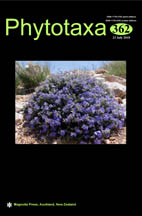Abstract
Chlamydomonas in the traditional sense is one of the largest green algal genera, comprising more than 500 described species. However, since the designation of the model organism C. reinhardtii as conserved type of this genus in 2007, only two species remained in Chlamydomonas. Investigations of three new strains isolated from soil samples, which were collected near Lake Nakuru (Kenya), demonstrated that the isolates represent a new species of Chlamydomonas. Phylogenetic analyses of nuclear SSU and ITS rDNA and plastid-coding rbcL sequences have clearly revealed that this species is closely related to C. reinhardtii and C. incerta. These results were confirmed by cross experiments of sporangium wall autolysins (VLE). All species belonged to the VLE group 1 sensu Schlösser. The comparison of the ITS-1 and ITS-2 secondary structures showed several compensatory base changes among the three species. In addition, the rbcL amino acid composition was also species-specific. The genus Chlamydomonas was phylogenetically closely related to the colonial families Goniaceae, Tetrabaenaceae and Volvocaceae. Chlamydomonas debaryana (VLE group 2) formed a separate clade among these colonial families of the Volvocales, a species of which autolysin dissolved the sporangium walls of the members of VLE group 1, suggesting its close relationship to Chlamydomonas. As consequence of our results, we propose Chlamydomonas schloesseri sp. nov. for the new Kenyan isolates. We also propose a new combination of C. debaryana to the newly erected genus Edaphochlamys.

